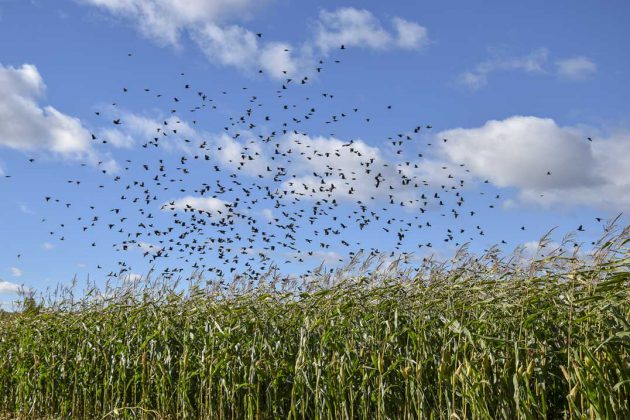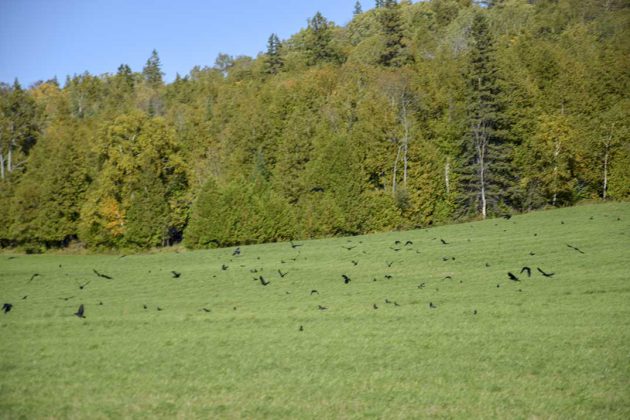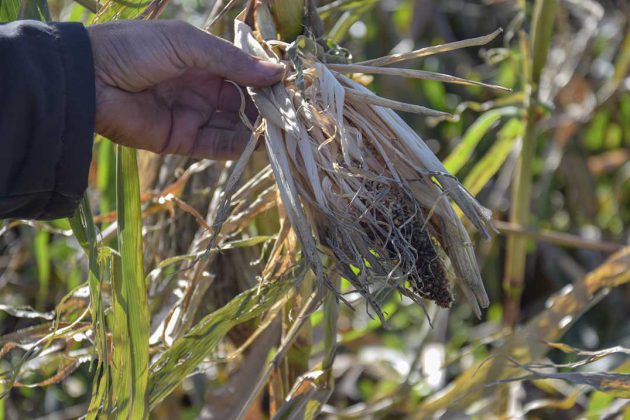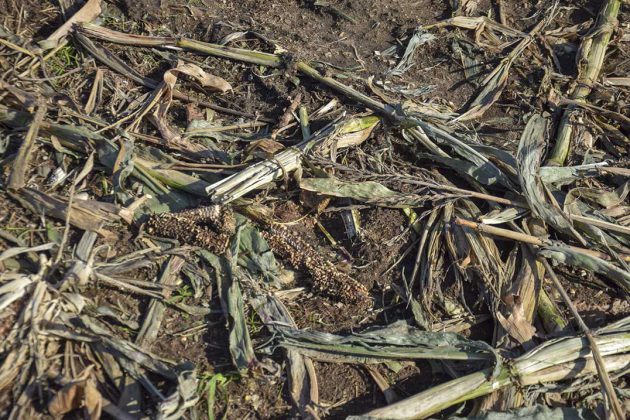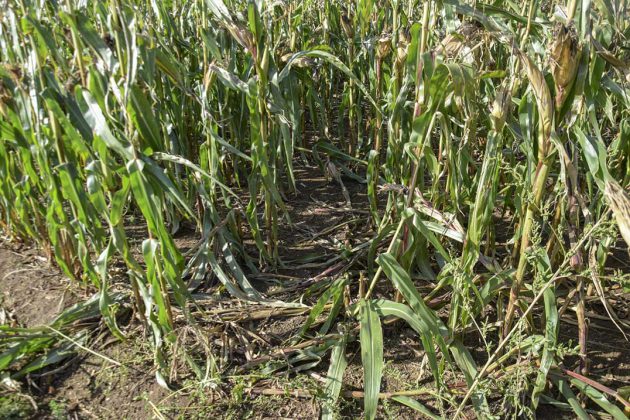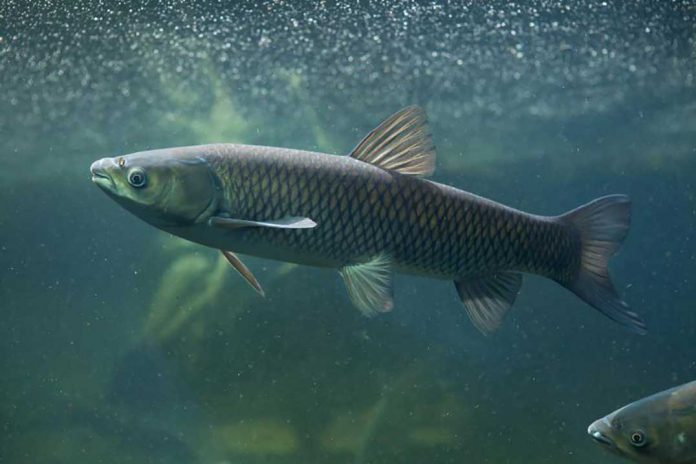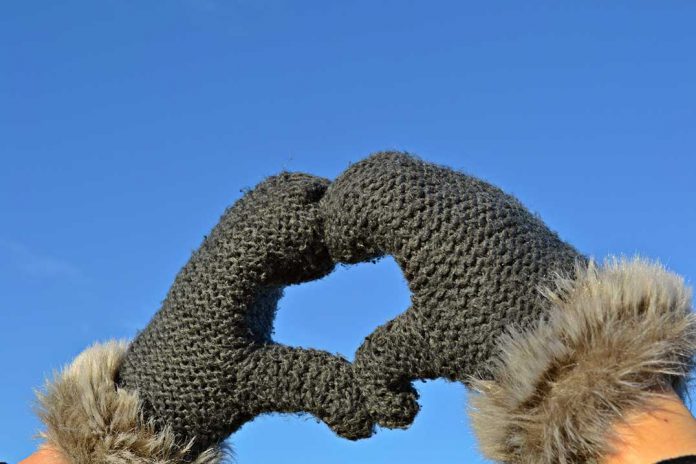GREEN BAY—Farmer Bruce Wood stands beside mangled rows of corn shaking his head, circling high above the field is a virtual black cloud of crows. A flock of crows is called a murder, and right now that seems appropriate because the usually taciturn farmer is definitely seeing red.
“Between the bears, the deer, the crows and the blackbirds, I figure so far we have lost about a third of this field,” said Mr. Wood. Farmer Ron Wood, whose fields are just across the road, has seen even heavier depredations on his fields.
Although farmers have seen some progress on the wildlife damage front in regards to red tape and certification of loss, and thanks to a steady and determined lobbying effort by Mr. Wood and his fellow Northeast Town councillor Paul Skippen during meetings with ministers and their staff, the province has committed to further study of the issue, but the government’s focus remains solely on predation and the loss of livestock. When it comes to the ravages of corn and other grain crops the answer remains the same.
“They say it is too expensive,” said Mr. Wood. “But they can spend hundreds of thousands of dollars prosecuting a farmer who shoots one Canada goose. Where are the priorities?”
Mr. Wood takes The Expositor through fields on his farm. As we approach another corn stand a huge flock of blackbirds take to the skies. The farmer grasps a sagging ear of corn and points to the top end. The cob is bare of the usual yellow kernels about one tenth of the way down its length.
Stepping deeper into the stand of corn stalks it becomes clear that the depredation extends all the way through the field.
Travelling to another part of the field we find bent over and trampled stalks. “You can tell this was probably bears,” he said, noting that the stalk is bent in half. “If it was racoons the stalks would be broken off lower.” The wide path of trampled corn extends deep into the field. A broken part of the fencing surrounding the field gives further evidence of the culprits.
“You can sometimes pick up some of the corn they didn’t get, but you get a lot of dirt with it too and that dulls the blades (on the harvester),” he said. “You just start to get going and then you have to stop and sharpen the blades.” That operation takes about 15 minutes, explains Mr. Wood, but those constant interruptions add up to a lot of lost valuable harvesting time. When you are racing the fall rains to get the crop in, every minute counts.
The damage from Canada geese and Sandhill cranes can be even more devastating to a field.
“We have a couple of fields down a little ways where we used to plant grain,” said Mr. Wood, “but we had to give that up.”
“We would have a great field of grain with stands about this high,” said Mr. Wood, holding his hand at about a four-foot level. “Then we would go back to harvest and there would be nothing left. The birds got it all.”
Mr. Wood said he finds that there is a bit of a double standard in society.
“People will drop off all kinds of food and stuff for abandoned cats and dogs, but when it comes to the farmers who have to feed the bears, deer and birds nobody wants to help,” he said.
It seems the issue has become more challenging in recent years. With Sandhill crane numbers escalating and the number of bears on a steady increase, even the flocks of Canada geese have been growing ever larger as hunting declines and wildlife protection measures improve numbers.
“They say we can shoot the problem animals, but we don’t want to have to do that,” he said. “Besides, you can’t be out there all the time. You go out and they take off, but then as soon as you turn your back they are back again. You can’t blame the wildlife, they are just doing what they need to survive, but it is costing us our livelihood.”
With farm prices largely set by the market, where Northern farmers have to contend with depredations that farmers in other regions do not have to face, at least not in such numbers, the farmer can’t pass the increasing costs on to the consumer, leaving them in a double bind.
“We would just like to see things be a little fairer,” said Mr. Wood. With all of the pressures on the family farm these days, the issue of increasing crop losses to wildlife is another straw on the back of the family farm.
As The Expositor left the field, three bears came out of the bush at the far field and dove into the corn to continue fattening up for the winter.


